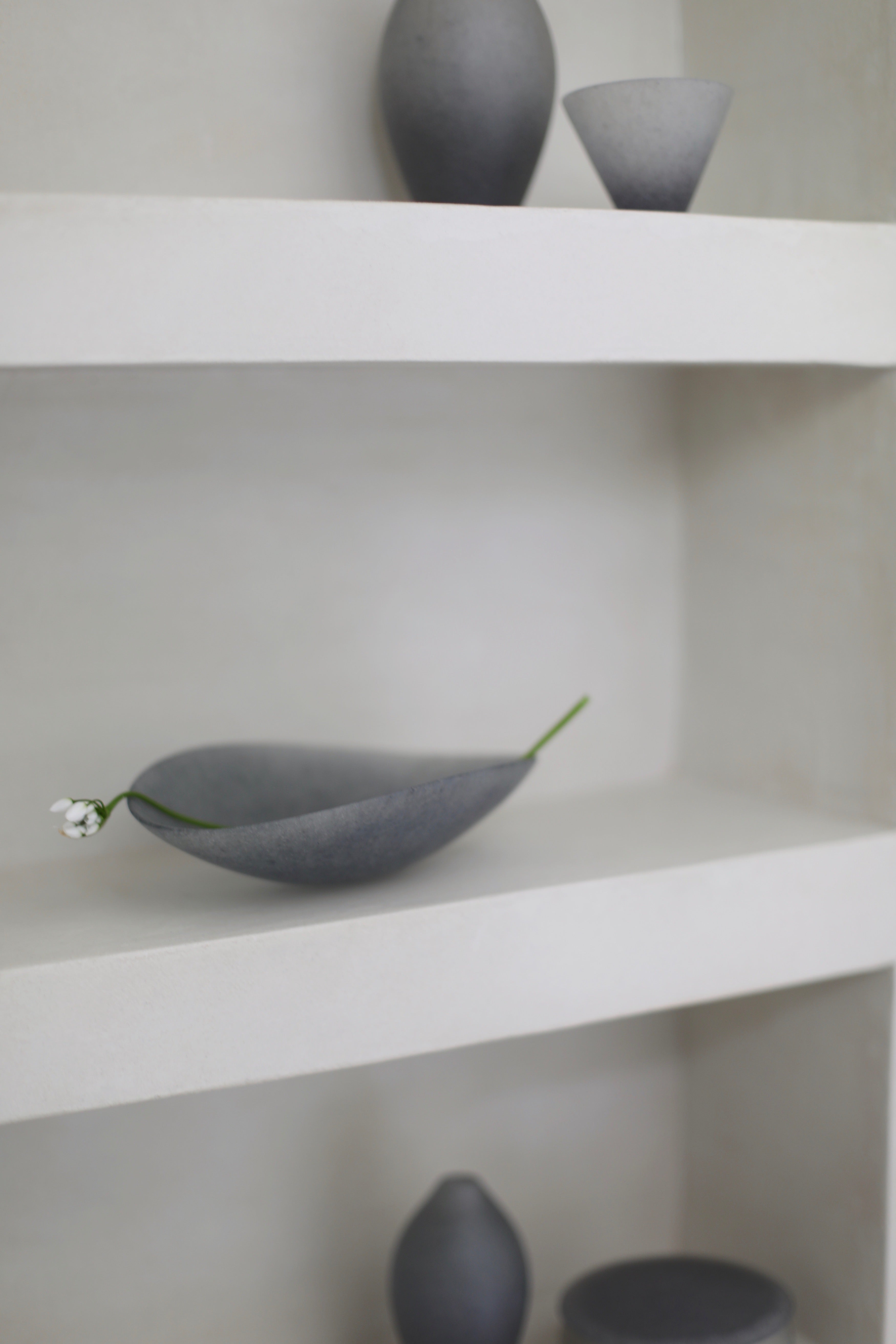After many months defined by the lack of touch, we thought it fitting to consider the appeal of making and collecting tactile art pieces. Many British ceramicists and wood artists utilise the nature of their materials to their advantage, creating interesting surface textures that celebrate the three-dimensionality of ceramic art. Touch is very important to gaining an understanding and a full sense of something, and it has been proven to influence our thoughts and behaviours.
Ceramics Inspired by Nature
Dora Good’s vessels epitomise ceramics with a tactile nature. The porous, rock-like appearance of her work echoes the mountains where she lives on the island of Mallorca. Running your hands across the vases and vessels will continue to surprise you, and only serves to reiterate the individuality of each piece. Her rough and abstract interpretations of the landscape are striking, with cracks and bubbles in the thick layers of glaze, ridges and incisions, or craters reminiscent of a distant planet.


Malcolm Martin and Gaynor Dowling’s wooden sculptural pieces are extremely tactile. Gaynor Dowling, one half of the artistic duo, studied textiles, which makes a lot of sense when you consider the fluidity lend to the forms by the carefully carved ridges and fluting. The carving emphasizes the dimensionality of the work, one of the main concerns of Martin and Gaynor.
Size in Ceramics
Size can also add to the tactile nature of a thing. Edmund de Waal writes about this in relation to netsuke in ‘The Hare with the Amber Eyes.’ Netsuke are miniature sculptures carved from ivory, wood, or other materials, that emerged in Japan in the late 16th century as toggles for the silk cords which carried their belongings.
Holding something in the palm of your hand gives you the perfect vantage point to examine the piece. Miniature ceramics are Yuta Segawa’s speciality. The size of the vessels emphasises the smooth lines and forms, which are easily traceable by hand. Yuta’s vases comment on the relationship between the artists body and their work, and to create such detailed ceramic pieces on a small scale is a testament to his abilities.


Mariana Alzamora’s spectacular moon vases are tactile in a very different way to Yuta’s miniature vessels. The moons are substantial, requiring the grip of both arms to hold. Whilst the moons that Mariana crafts through coiling are wonderfully smooth, they maintain an organic and natural appearance as the surface is burnished so the microscopic clay discs in reflect the light. The spherical form is very enticing to touch and helps you to understand the craftsmanship required in the undertaking of such a piece.


Intricate Details
Fliff Carr’s hand rolled lace plates are tactile due to the combination of wobbly, irregular edges and the embossing, stamping or inlay of fabrics and lace patterning into the clay. The plates are whimsical and pretty, suggestive of tea-parties and picnics and they exude joy. Fliff has also used leaves and flowers to imprint their shape on to plates. These botanical plates are inspired by 18th century botanical prints.


Texture in Textiles
It seems wrong to speak about tactile objects at Maud and Mabel without considering the clothing collection. The brands are chosen for their excellent material quality. Album di Famiglia are a family-run label started by Monica Rusconi in 2000. The brand’s unique designs are made from materials in small workshops in Italy. Pieces are designed with longevity, crafted meticulously to be worn for a long time. Cashmere blend cardigans and jumpers, loose fitting linen tops and crisp cotton shirts and blouses exude effortless style and are a dream to wear.


The muslin material used for Injiri’s dresses is light, making for ethereal flowing designs. The Indian label works with master weavers in a process that harks back to the perception of fabric as precious in ancient times. Stitched and hand-woven chikankari elements add to the intrigue of the dresses, which are intended to tell a story. Injiri is inspired by ethnic textile traditions from across the world. Their statement that, ‘We celebrate fabric from its inception in the yarn at the end of the process in the tangible product’, expresses the importance of the fabric.
We recognize now more than ever the importance of touch as one of our senses. It is so ingrained in so many of our daily activities that it is easy to forget. Tactile processing is involved in so much of what we do without us even noticing, including walking and eating. Appreciating objects more completely can be aided through exploring them with our touch.

